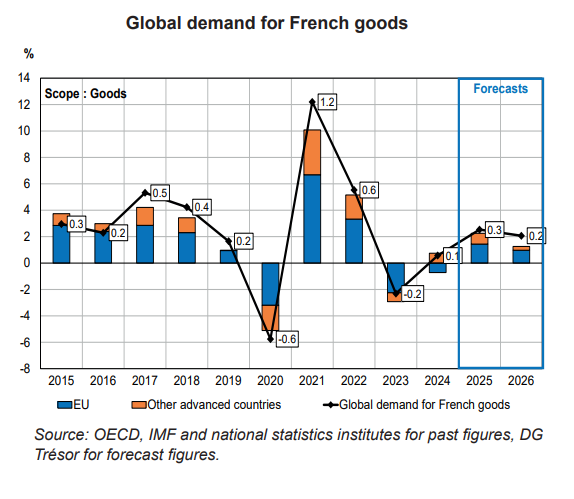World Economic Outlook in Autumn 2025: Global Economy Hampered by an Adverse Trade Environment
The global economic outlook has been revised downwards from spring forecasts as the global economy continues to reel from US tariffs and an uncertain environment. Growth trends are set to vary among advanced economies, while growth is expected to slow down in emerging economies which should continue nonetheless to drive global growth. Trade policy is still the main downside risk to the economic forecast.
US trade measures have driven the global outlook downwards compared to spring forecasts: global GDP growth is expected to stand at 3.0% in 2025 and 2.9% in 2026, down from 3.3% in 2024.
Among advanced economies, growth is set to considerably slow in 2025 and 2026 in the United States, as consumption is adversely impacted by tariff hikes and budgetary cuts. Euro area growth should be driven by a pick-up in consumption following a decline in inflation and by sustained investment as a result of falling interest rates. However, growth is expected to be hindered by trade tensions and the appreciation of the euro. Germany’s growth is set to be sluggish in 2025, but should recover in 2026 with the help of fiscal stimulus, while weak growth is expected in Italy in spite of support in the form of the National Recovery and Resilience Plan (RRP). Spain’s growth is projected to remain far more robust, driven by population growth, dynamic investment and tourism. An expansionary fiscal policy is expected to support the United Kingdom’s growth.
Most major emerging economies are expected to experience a slowdown in growth in 2025 and 2026: in particular, China’s growth is set to falter as a result of trade measures and persistent structural imbalances.
Global trade should continue to be hampered by US trade measures, with growth of just 2.1% in 2025 and 2.3% in 2026, significantly below its historical average (2.8% from 2015 to 2019). Recovery in 2025, expected as a result of forecasts of tariff hikes for the first half of the year and demand from advanced economies, should be weaker than projected as it has been hindered by a decline in imports from China and India. In 2026, a pick-up in emerging-economy imports is not expected to offset declining US imports.
The risks surrounding this scenario are mostly skewed to the downside as the Trump administration continues to threaten to impose new tariffs amid persistent geopolitical tensions.
